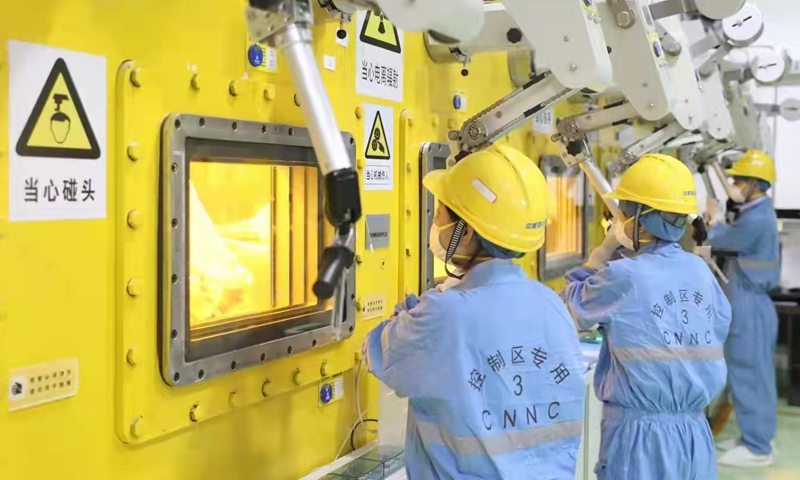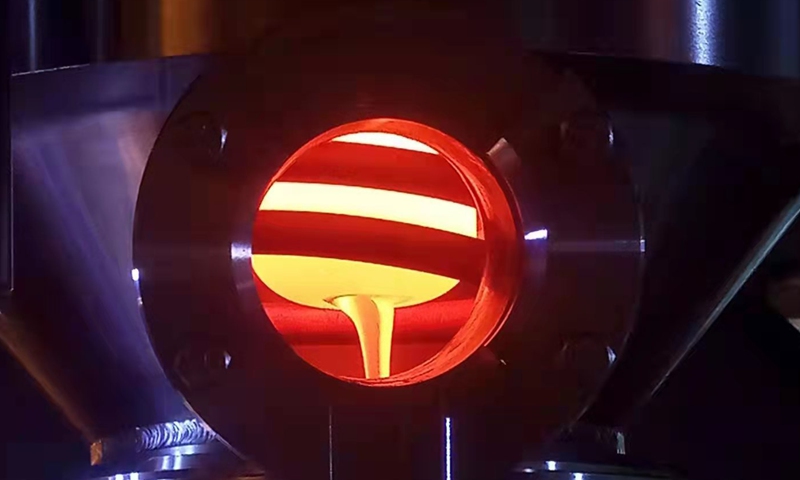China’s first high-level radioactive liquid waste disposal equipment, capable of melting waste into glass, has been officially put into use in Guangyuan, Southwest China’s Sichuan Province, on Saturday, making China one of the few countries in the world to have acquired such a technique.
Chinese experts believed that the technique could have been a better option for Japan to dispose the nuclear-contaminated Fukushima wastewater, but Japan “clearly does not want to pay the bill.”
The equipment is a milestone project at the back end of the nuclear industry chain, and is considered a major step forward in the safe and green development of China’s nuclear industry, the Global Times learned from the State Administration of Science, Technology, and Industry for National Defense on Sunday.

Nuclear waste treatment is the final part during the safe use of nuclear energy, of which the most difficult and technically advanced is the treatment of high-level radioactive liquid.
To tackle the challenge, China’s approach is to mix and melt liquid waste with glass materials at a temperature of 1,100 C or higher and then leave it to cool and form into glass, which can effectively and stably contain the radioactive elements inside, thanks to the low leaching and high strength of the glass, read a statement from the administration.
Such an approach to deal with the waste is by far the most advanced method in the world, the statement said. Only the US, France, Germany, and a few others have mastered the technique previously.
The difficulties and core capabilities of such a waste disposal mechanism lie in the consolidation formula with a high inclusive rate and stability to make sure the radioactive materials inside can be safely contained for more than 1,000 years, the statement said.
The project was approved by the China Atomic Energy Authority (CAEA) in 2004 and was designed jointly by China and Germany. The first batch of glass bodies consolidated from radioactive waste were rolled out for evaluation on August 27, and successfully passed the tests with all relevant technical indicators reaching international advanced levels.

The annual waste disposal amount is expected to reach several hundred cubic meters, and the glass produced from the waste will be buried in a repository hundred of meters beneath the ground, realizing the complete isolation of radioactive materials with the biosphere and laying a solid foundation for the safe use of nuclear energy in the future.
In April, the Japanese government made a startling decision to dump nuclear-contaminated Fukushima wastewater into the ocean, claiming the decision “the best option,” a remark that shocked and drawn fury not only from its neighboring countries but also the whole world.
Zhou Yongmao, an academician at the Chinese Academy of Engineering, who spent over 60 years in nuclear engineering, told the Global Times in a previous exclusive interview that leaving the nuclear wastewater deep underground after solidification is a relatively better option for safety and health concerns, though with higher costs. However, “the Japanese government clearly does not want to pay the bill, preferring to push the risk on to others.”
“China has always attached great importance to radioactive waste management, and it has maintained an open attitude for international cooperation,” the administration said. “China, as a responsible world nuclear power, has strengthened collaboration with the International Atomic Energy Agency and actively participated in experience exchanges with others.”
Now, China has acquired waste treatment capabilities with high-, medium- and low-level radioactivity. Liu Yongde, chief engineer at CAEA, said that the institute will accelerate the process of radioactive waste disposal to provide sound support for China’s commitment to peak carbon dioxide emissions before 2030 and achieve carbon neutrality before 2060.
Source: Global Times, 12 Sept 2021. By Fan Anqi and Deng Xiaoci.
https://www.globaltimes.cn/page/202109/1234033.shtml?fbclid=IwAR3-hy_seahOZce65v7dBJ63VoHRgqPalPNprvdrmy1uV9rVmDjr5G658n0